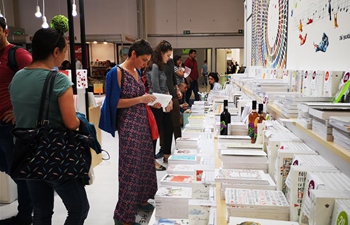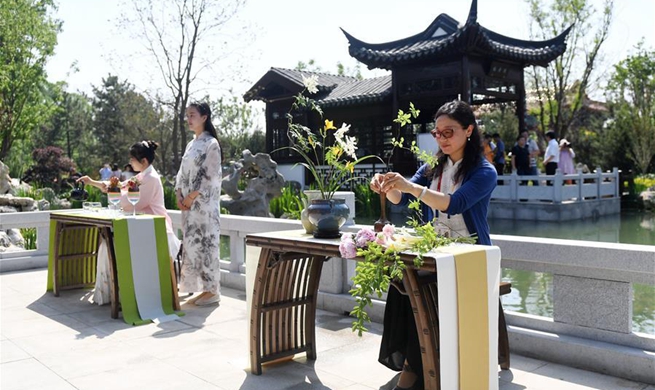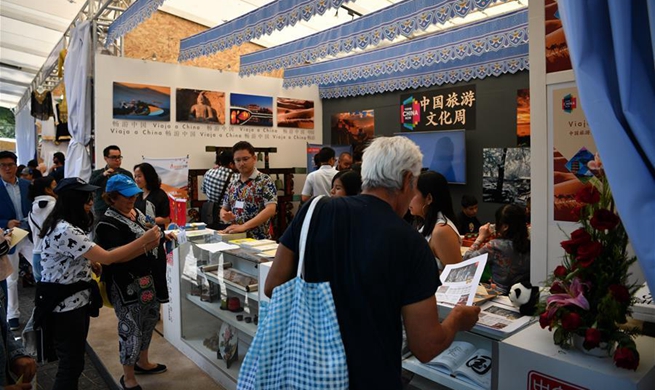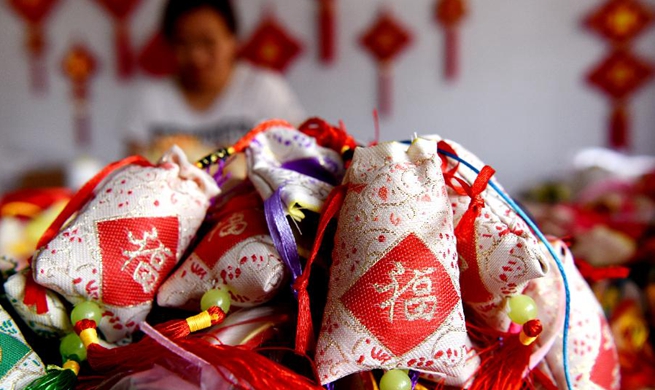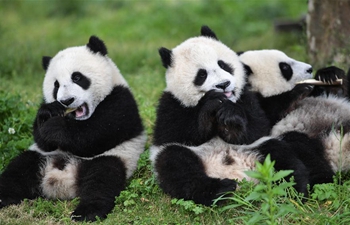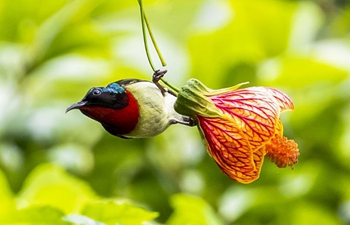SHENYANG, June 2 (Xinhua) -- As the vibrant sound of string music and a powerful singing voice echo across the room, a strong young man beats a tiger to death.
It's a scene from the Chinese novel Water Margin, one of the Four Great Classical Novels in Chinese literature, but the scene is performed with shadow puppets by master Lin Shimin.
Lin, from northeast China's Liaoning Province, has been performing Gaizhou shadow puppetry for 41 years. Gaizhou is a city in Liaoning.
"Gaizhou shadow puppet figures have huge eyes, and you can tell if a figure is a bad guy or a good guy simply from their appearances," said Lin, the fifth inheritor of the national-level intangible cultural heritage.
Lin is currently looking for young talents to inherit the art, which faces a shortage of young people willing to learn the traditional craft.
"Most performers in shadow puppetry troupes are above the age of 60," she said.
In China, shadow puppetry has a long history. Ancient Chinese historical records show that shadow puppet plays were initially created by a Chinese Taoist during the Han Dynasty (202 BC - 220 AD) to console Emperor Wu, who was heartbroken after losing one of his imperial concubines. The Taoist made a stone image of the concubine and projected it in a tent with candlelight. The shadow looked so vivid that it helped the emperor relieve his grief.
Over the next 2,000 years, the stone figures were gradually replaced by cowhide ones, and the tents were turned into curtains. Performers then added drum sounds and Chinese opera to accompany the movement of the figures, and the shadow play was born.
Shadow plays went through a hiatus during the Cultural Revolution between 1966 and 1976 but re-emerged shortly after in the early 1980s, when the art was involved in rural marriage ceremonies, funerals and banquets.
Gaizhou shadow puppetry, however, has a much shorter history. It originated in the late Ming Dynasty (1368-1644) and the early Qing Dynasty (1644-1911) and has unique local features. The music during the performance features a robust local singing style and a four-string musical instrument called Sixianhu. The puppet performers usually stand behind a curtain and play with the puppets while singing the lines using a local dialect and slang, to depict historical stories, folklore or simply stories they make up.
Lin started learning the art from master Wang Shengtai in 1978.
"My master taught me in the daytime, and I repeatedly practiced at night," she recalled. "When he was performing, I would stand behind the curtains and watch closely, so I could learn the techniques."
Lin also focused on the making of the puppets and tried to collect stories for the performances. In her studio, a shelf is filled with scripts, many of which have yellowed with age.
"They were the scripts from my past performances, but they're still so precious," Lin said. "When we were performing, we would look at the scripts and sing or 'rap,' while controlling the puppets."
On Lin's desk lie many "heads" of the puppets made of donkey hide, which she created through a complicated process of carving, painting and tinting.
"Carving is probably the most difficult," she said. "You have to be extremely careful using your strength."
Every time she performs, Lin also brings with her a half-finished donkey-hide puppet, so that after each show she can share with the audience how the puppets are made.
"I not only want to bring laughter to the viewers but also share the 'behind-the-curtain' things," she said.
Beginning in the late 1980s, as films and TV series gradually became major entertainment, shadow plays waned, with many performers shifting jobs. But Lin stuck with the art. In 1993, she created a shadow puppetry troupe with the money she earned from performing. She also scouted for apprentices to train new talents.
More than 40 years of experience made Lin an influential figure in the industry. Last year, she and her troupe performed more than 120 shows. Most of the shows were charity events for senior citizens and children.
"Hopefully through my performance, people will get to know the ancient art," she said.
Lin said that the craft is in dire need of young people.
"The youngest performer in my troupe is 51 years old," she said. "I hope that more young people will join us so the heritage will be passed on through the generations."




